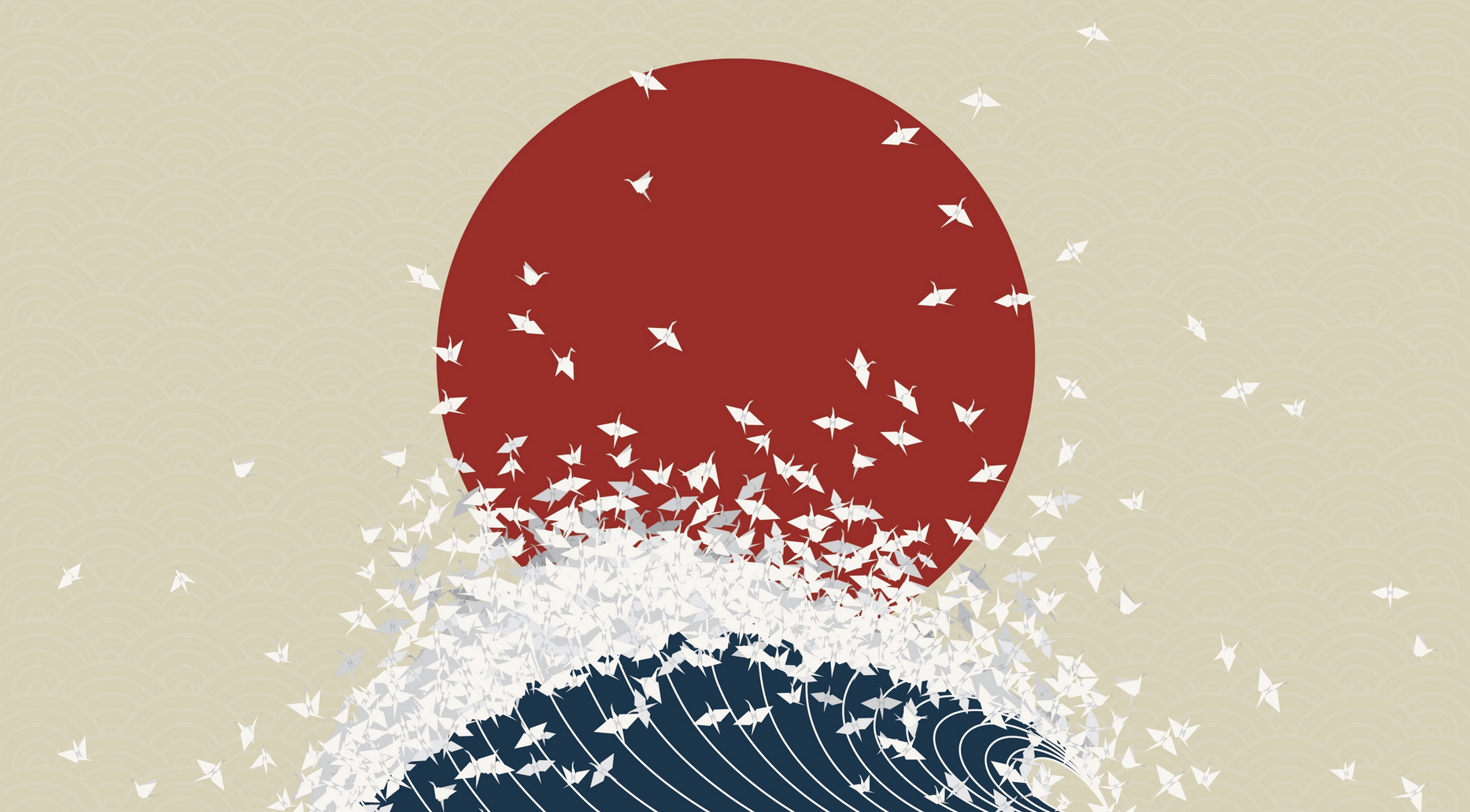CURRENT STATE OF JAPANESE SECURITY AFFAIRS
The need to balance China’s emergence as a global political and military player has led Japan’s strategic bureaucracy to assert itself in a way that would have been difficult to predict two decades ago. The publication of the 2021 annual white paper of the Ministry of Defense, “Defense of Japan“, with the threatening figure of a samurai warrior on its cover as a clear sign of change in the military’s mindset and vision of national security, unequivocally identifies Beijing as an existential threat.
Such “straight to the point” statements are at odds with postwar Japanese approach to foreign affairs, mainly based on international peace and stability. The preclusion of Grand Strategy after Japan was military defeated and occupied by the US had led Tōkyō to focus mainly on economic growth, exports, and welfare without the burden of a strong military apparatus. For nearly seventy years, Japan was happy to rely on American hard power for its own security.
The rising challenges posed by China have prompted Japan to quickly revise its pacifist approach to the international system. Emboldened by the Obama’s administration “Pivot to Asia”, a 2011 strategic rebalancing proposal to consolidate American interests in Asia and contain China’s perceived ascendency in the region, Japan quickly seized the opportunity to speed up reforms and approach regional issues considering all tools of statecraft.
When Washington was still framing its new strategy to balance China in the Asia-Pacific region, Japan had already published its 2013 National Security Strategy (NSS). The NSS, a comprehensive approach to national security objectives, already offered an insightful course of action to deter Beijing from challenging the status quo in Asia. Since then, Tōkyō has been at the forefront of the “liberal” order’s initiatives in Asian politics.
Tōkyō is currently promoting a multilateral approach based on a “Free and Open Indo-Pacific” (FOIP) vision and fervently contributing to the strengthening of the Quadrilateral Security Dialogue (QSD), an inter-governmental security forum between Australia, India, Japan and the United States whose main goal is to prevent China’s hegemony over the Asia-Pacific region.
Despite being often labeled as an investment program to further economic growth in Africa and Asia, the FOIP is mainly a geopolitical instrument to balance China’s influence in the region. The FOIP is therefore a clear commitment to the American led international order on which Japan’s national prosperity and security is highly dependent. Aside from the FOIP, Japan also plans to strengthen its oversees infrastructure investments in Southeast Asia which already overshadow by far those of China.
Besides diplomacy and economic investments, the Japanese approach to regional politics has an increasing military commitment. The recent statement made by Prime Minister Fumio Kishida regarding the gradual increase of Japan’s defense spending – from 1.3% in 2021 to 2% of national GDP in 2027 – is only the last development of a long term Japanese strategy, boosted under former Prime Minister Shinzo Abe, to expand its international military status and give up on its reputation as an introverted country focused on economic wealth. Japan’s inclusion into the ambitious project of Global Combat Air Programme (GCAP), a venture between Tōkyō, London and Rome to develop a cutting edge next generation combat aircraft, is probably the most striking example Japan’s assertive approach to contemporary international relations.
Lastly, the recurring attempts to amend article 9 of the Constitution, such as the 2017 announcement made by former Prime Minister Shinzo Abe for a possible new constitution in 2020, clearly underscore the goal of large swaths of the Liberal Democratic Party, the ruling political party for most of Japanese postwar political history, to start anew in the international arena, leaving behind the legacy of a minimalist and defeated country.
JAPAN AND CHANGES IN THE INTERNATIONAL SYSTEM: A HISTORICAL PERSPECTIVE
Previous examples provide some meaningful insights into Tōkyō’s current strategic thinking. However, where previous statements refer to present-day Japanese strategic vicissitudes, this series of articles titled “How strategic imperatives drive political changes in Japan” is not focused on contemporary Japanese geopolitics. The goal of these articles is to use a historical approach that goes beyond current affairs to understand how effectively Japan adapted to past shifts in the regional distribution of power. Exploring the past is the only analytical tool that provides insightful perspectives and patterns for understanding the complex set of international causes that lead to systemic changes in human communities and nations. In other words, it helps us to shed a light on a nation’s ability to successfully react to perceived security threats. The objective is therefore to look at past events to better understand how Japan can effectively adapt to international changes to achieve its Grand Strategy objectives.
As we have seen, the rise of Beijing has prompted several changes in Tōkyō’s introversive and uncomfortable approach to Japan’s strategic imperatives. However, such “unprecedented steps” to address critical security issues are not new. Similarly to the perceived threat posed by the People’s Republic of China to contemporary Japan, seventh century Yamato State and nineteenth century Meiji empire faced dramatic shifts in the international balance of power. The rise of powerful foreign powerbases, namely Sui and Tang China and later the Western Powers, were seen as existential threats that required an in depth rethinking of the institutional, political, and ideological set up of the State.
The goal of this first article of the series “how strategic imperatives drive political changes in Japan” is to cast a light on Japan’s unparalleled ability to quickly adapt and successfully deal with rising threats and systemic changes on the international stage. This article is about the first case study: the founding of the Ritsuryō.
JAPAN’S FIRST CENTRALIZATION AND THE BIRTH OF THE RITSURYŌ STATE
The reunification of China under the Sui dynasty in 589 and, subsequently, the unification of Korea in 668, under the kingdom of Silla, a close ally of China, were a milestone in the development of Japan’s first centralized form of government. The consolidation of powerful empires on the continent meant that Japan was facing a potential existential threat for the first time in history. The substitution of the Sui by the Tang in 618, arguably the most powerful and prestigious of all Chinese dynasties was even more alarming for the Yamato Court. The changing geopolitics of East Asia therefore prompted the leaders of ancient Japan to come up with a solution to address such an unprecedented challenge. The chosen path was the introduction of a new system of government in the country, through the adoption of foreign models from the continent as early as the sixth century.
The fact that Japan had previously fought on the losing side, suffering the loss of both its expeditionary force on the mainland and its closest Korean ally, the kingdom of Peachke, at the battle of Hakusukinoe in 663, made the need to speed up the reform process of State centralization even more urgent. The fear of a possible Chinese expansion in the Japanese archipelago is clearly supported by archeological evidence, showing the building of military fortifications along the coast of Hakata Bay in the seventh century.
The defeat of Hakusukinoe led to even more radical changes at the Imperial Court. In 694, the first stable capital was established at Asuka. In 702, a new code of laws inspired by Chinese principles of government was issued: the Ritsuryō. The Ritsuryō consisted of two parts: criminal laws (ritsu) and administrative rules (ryō). The most prominent aspect of the administrative reform was the overcoming of clan reality and the transformation of the Japanese inhabitants already subject to Yamato rule into imperial subjects, directly linked to the emperor according to a hierarchical relationship that bounded them to the ruler. In 710, the capital was moved to Nara, a new city modeled after the Chinese capital of Chang-an, giving the Yamato bureaucracy an effective administrative center to implement the reforms of 702. The Ritsuryō represented the culmination of the State building and centralization process in ancient Japan.
As often happens with rising powers through history, the process of State building had a strong cultural and religious component. In a similar way to what had happened in China and Korea, the Yamato court needed a sophisticated religion with universal principles to sanction state power and legitimize its claim to rule. A key aspect of a centralized government run by an efficient bureaucracy on which imperial power rested was the adoption of an official religion that would legitimize the emperor’s role internationally. In ancient Asia, the religion that could legitimize such needs was Buddhism.
Initially sponsored by the most powerful clan of the time, the Soga clan, Buddhism quickly became the religion of the ruling elites. With its ceremonial and universal values, Buddhism made it possible to elevate the prestige of the emperor, now a ruler leading a unified and pacified country, enhancing international prestige among the royal courts of East Asia.
The political legitimacy derived from the adoption of Buddhism led to a radical transformation of customs, architecture, and funeral rites, one of the most common examples being cremation replacing traditional burials.
The building of great Buddhist temples and statues to highlight the strength of the State was perhaps the most visible aspect of the Yamato Court’s patronage of the new faith. The most prominent case was the inauguration of the Great Buddha statue of the Tōdai-ji temple in 752, the highest point of the Yamato State’s soft power. The eye-opening ceremony of the 16 high meter statue was performed by the Indian monk Bodhisena at the presence of 10,000 monks. The Buddhist ceremony was attended by several dignitaries from East Asian countries, including Chinese and Korean officials. In a similar fashion to contemporary great venues, such as the World Cup and the Olympic Games, the main goal of the inauguration was to enhance the prestige of the State and gain international recognition as a civilized nation.
However, unlike what happened in the West after the diffusion of Christianity and Islam, the State’s patronage of Buddhism didn’t lead to the official dismay of the native religious myths and symbols. In 712 the compilation of the Kojiki, Japan’s oldest literary and historical document combining Japanese myths and semi historical accounts to boost the prestige and legitimize the right of the imperial line to rule the archipelago, was completed. In 720, the second-oldest book of classical Japanese history, the Nihon Shoki, was published. The Nihon Shoki was heavily inspired by the model of official Chinese histories with a narration of events in chronological order. The main goal of this ancient form of “State propaganda” was, as with the diffusion of Buddhists practices, to enhance the prestige of the State, glorifying the uniqueness of the Japanese past and the imperial line’s right to rule in perpetuity.
The Ritsuryō system, which remained in force until the mid-nineteenth century, sanctioned the triumph of a centralized administration capable of imposing itself on the various clans to protect the interest of the Imperial Court from foreign threats. One of the most interesting features of the Ritsuryō system was its ability to adapt the Chinese model to local needs. A classic example comes from the Yamato State’s decision not to institute the selection of officials through the system of imperial examinations, as was the norm in Sui and Tang China. Instead, Japan continued to choose imperial bureaucrats by birth rather than merit.
This bureaucratic organization also reflected the peculiarities of the imperial line and the concept of Tennō “heavenly Sovereign”, in which the Japanese emperors were direct descendants of heaven rather than governing through heavenly mandate, under which a rightful and fair ruler is allowed to rule, as was the case in the Chinese philosophical tradition. In other words, in contrast to Chinese tradition, the Japanese emperor held in perpetual political power.
The Ritsuryō would show its first signs of failure after Tang China started to decline during the An Lushan rebellion of the mid eight century. With the disappearance of its existential threat, the need for a centralized State started to wane. The cost of maintaining a standing army, a sophisticated system of temples and Buddhist institutions and an extensive bureaucracy in times of peace was becoming ruinously expensive for the State. This situation is notoriously testified by the abolition of compulsory conscription in 792. The standing army modeled on Chinese standards was gradually replaced by local militias, whose loyalty lied with local and provincial officials rather than the court, which would pave the way to the reaffirmation of clan-based interests that would, in the long run, culminate in the ascension of the samurai class as supreme rulers of Japan.
CONCLUSION
Although Tang China never invaded Japan, the perception of an existential threat was enough to cause far-reaching changes in the Japanese institutional system of the seventh and eight centuries. These changes resulted in an efficient bureaucratic apparatus and a holistic approach to strategic imperatives that a nation internally divided could not have achieved. States inability to successfully adapt to international changes in the balance of power can have dire consequences in the long run. In the worst-case scenario, it can lead to a nation’s disappearance trough cultural assimilation or extermination by a foreign power, as testified by several historical examples.
Although the Ritsuryō system would have long lasting effects on the country’s social and cultural life, the origin of such transformations was driven by security concerns to ensure the survival of the State. Faced with the prospect of defeat, nations seek to act in pragmatic ways to overcome threats and find lasting security solutions for survival. In other words, strategic thinking doesn’t occur in a vacuum but arises from Grand Strategy imperatives. The key takeaway from this observation is that contemporary Japanese initiatives to outmatch China in the Indo-Pacific are still driven by the same security goals than Ritsuryō Japan: the need to survive in an increasingly hostile environment.
Picture credits: primastically.blog






Be First to Comment